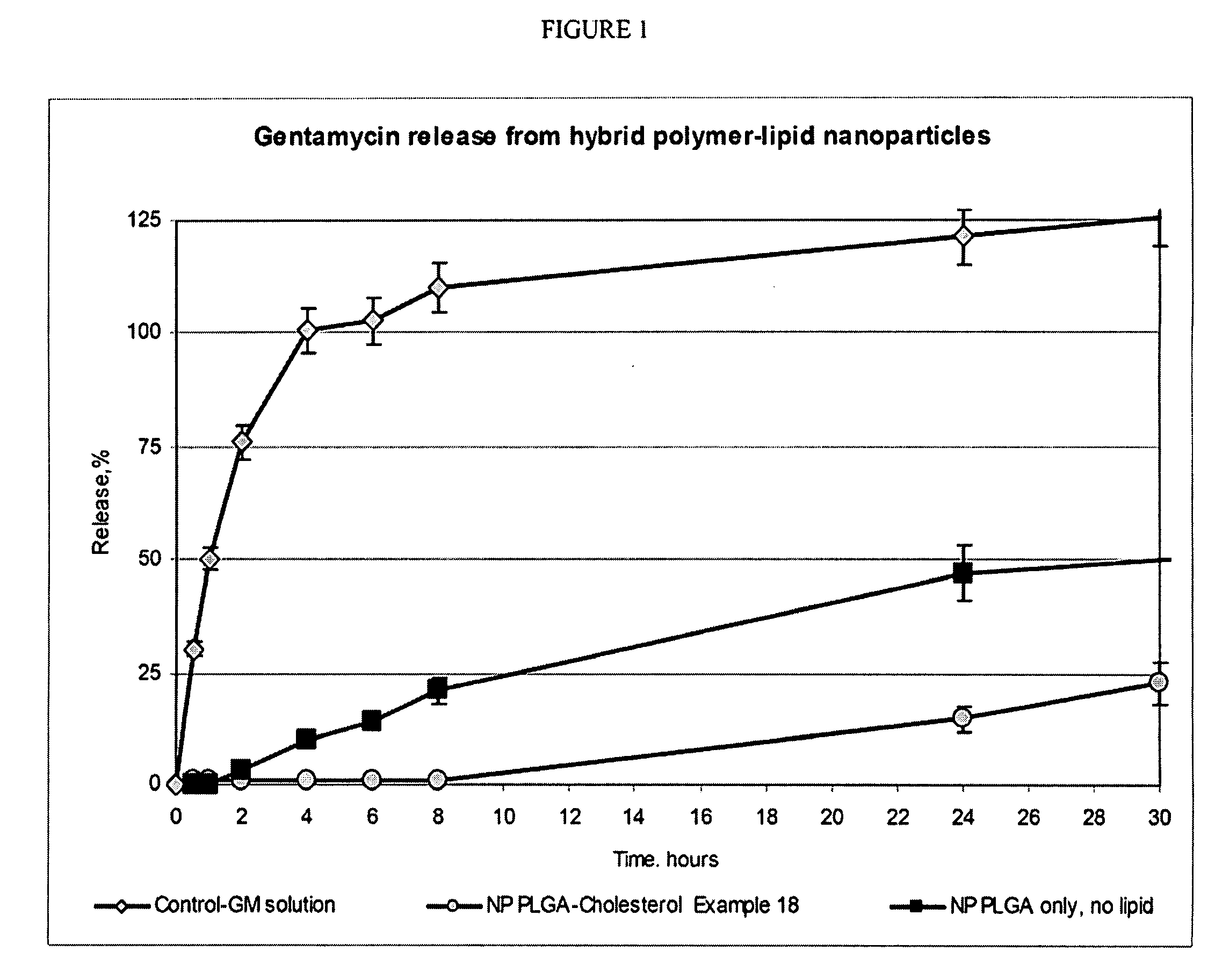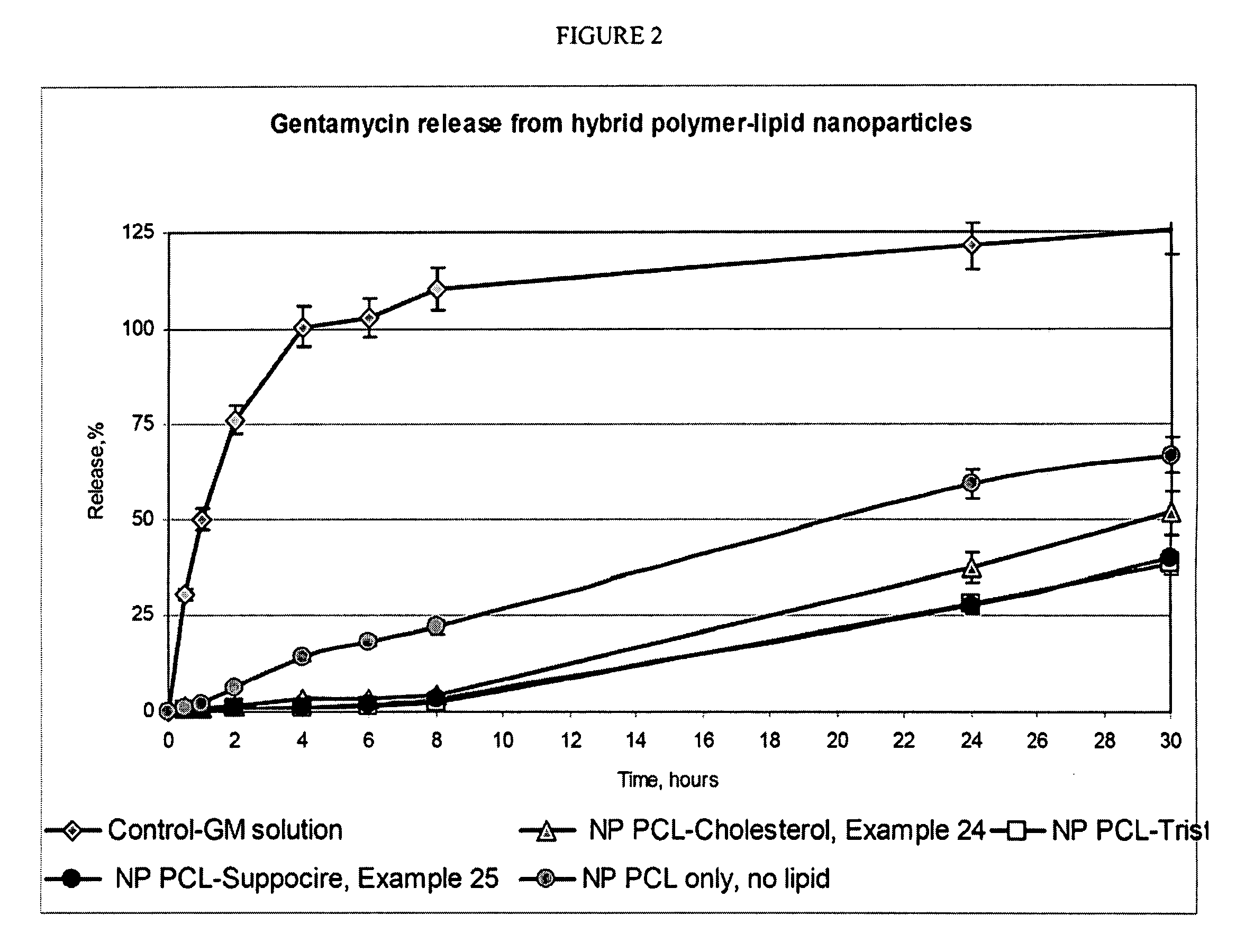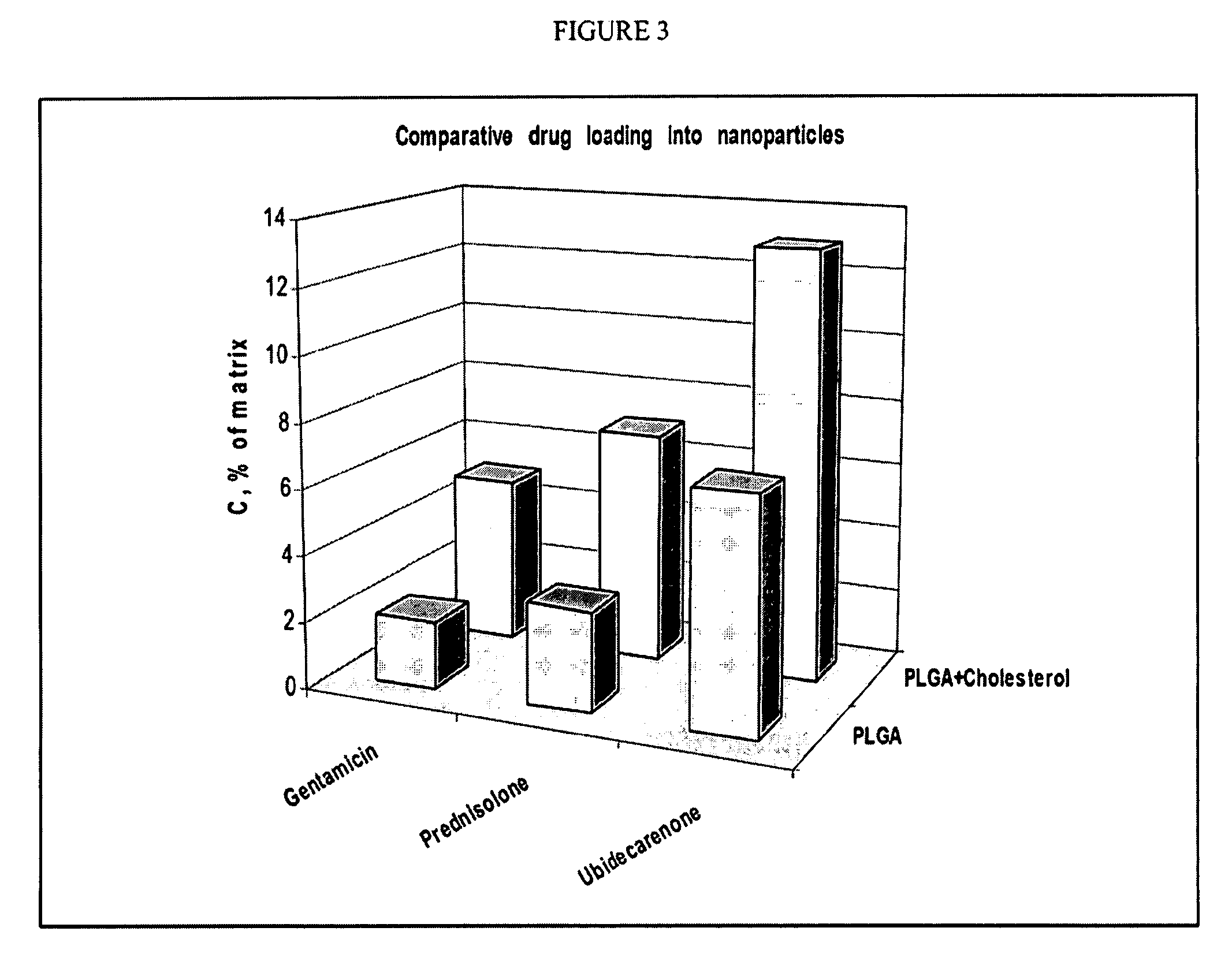Hybrid lipid-polymer nanoparticulate delivery composition
- Summary
- Abstract
- Description
- Claims
- Application Information
AI Technical Summary
Benefits of technology
Problems solved by technology
Method used
Image
Examples
examples
[0048] A number of HPLNP were prepared in accordance with the invention as listed in Table 1.
Prepared by Emulsification Process
[0049] Emulsification process: Cholesterol (50 mg) and Polycaprolactone (450 mg, mw 10,000) were dissolved in 10 ml of Ethylacetate, saturated with water. Prednisolone (50 mg) was added to obtained solution and stirred until completely dissolved. Solution in organic solvent was added to 40 ml of 3% Tween-80 (Polysorbate 80) in purified water, sonicated 60 seconds using ultrasonic processor at 120 watt and homogenized using high pressure homogenizer (e.g., Avestin Emulsiflex C-5 or similar) for 5 cycles at 8,000-15,000 psi. After homogenization organic solvent was evaporated under reduced pressure, suspension was concentrated to 20 ml and passed through membrane filter with pore size 0.45 mcm. Particle size was estimated using Malvern Nanosizer Nano-S analyzer in water media. (Examples 1 of Table 1)
Prepared by Precipitation Process
[0050] Polymer (polyla...
PUM
| Property | Measurement | Unit |
|---|---|---|
| Temperature | aaaaa | aaaaa |
| Mass | aaaaa | aaaaa |
| Mass | aaaaa | aaaaa |
Abstract
Description
Claims
Application Information
 Login to View More
Login to View More - R&D
- Intellectual Property
- Life Sciences
- Materials
- Tech Scout
- Unparalleled Data Quality
- Higher Quality Content
- 60% Fewer Hallucinations
Browse by: Latest US Patents, China's latest patents, Technical Efficacy Thesaurus, Application Domain, Technology Topic, Popular Technical Reports.
© 2025 PatSnap. All rights reserved.Legal|Privacy policy|Modern Slavery Act Transparency Statement|Sitemap|About US| Contact US: help@patsnap.com



